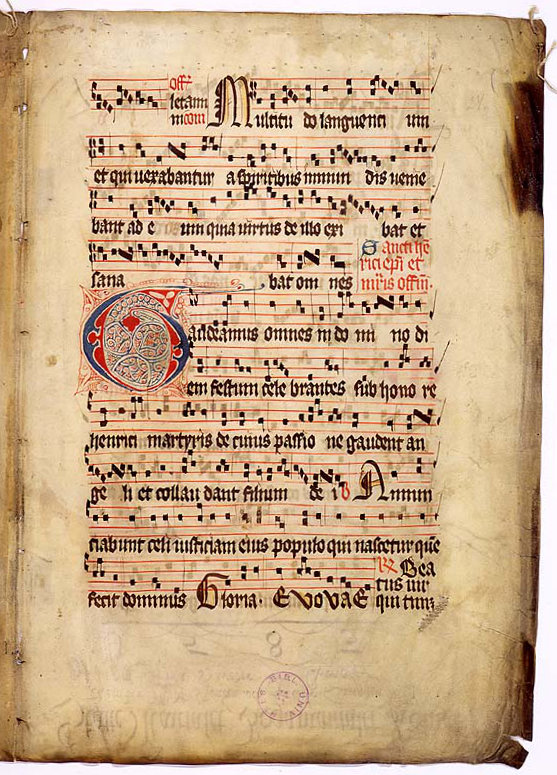

Indeed, these nuances have their origins in the first Gregorian chant manuscripts that were transcribed into typography this way. But to reproduce a piece that is already written, he needs to respect his model, taking care of the neumatic cuts he sees.

Whether the musical nuance indicated by a neumatic cut is short or long, it is not the role of the typographer to care about it. Depending on the liturgical book, their length may vary from half a square note to two square notes. As we can see in the neume sung on Dó, these cuts are more or less in length. The distinction between neumatic elements is made by “neumatic cuts”. Just to think of articulating the two neumatic elements well can at times be sufficient to render this nuance. Some would translate this nuance in the manner of singing, by distinguishing the last punctum inclinatum with a little more “weight”, a very light sustain. If the second transcription has been retained instead of the first, it does not seem daring to think that this choice was dictated by a musical reason. It would have been possible, without changing the melody of the first eight notes of our neume, to transcribe it like this: instead of. These elements give an indication of rhythm by the distinctions or articulations that they introduce to the thread of the melody. Here is an example of a neume, which we will analyze throughout this document: Thus we have the following analogy (we will explain the details later): Just as our sentences are composed of words, syllables and letters, it is possible to distinguish, in the typographical transcription of Gregorian chant, neumes, neumatic elements and neumatic glyphs. Gregorio still uses this structure, however, when analyzing its gabc code, so users interested in understanding how Gregorio "thinks" about a score may find it useful. While Gregorio did at one point try to implement this XML standard, that feature was so little used that it has been abandoned. It was originally concerned with defining an XML standard for describing Gregorioan chant. This document was written by a monk of the abbey of Sainte-Madeleine du Barroux to describe his vision of the structure of the writing of Gregorian chant.


 0 kommentar(er)
0 kommentar(er)
